Health Care > CASE STUDY > Pathophysiology and Nursing Management of Clients' Health (All)
Pathophysiology and Nursing Management of Clients' Health
Document Content and Description Below
Pathophysiology and Nursing Management of Clients' Health Case Study Mr. C Grand Canyon University NRS-410V July 21, 2019 Pathophysiology and Nursing Management of Clients' Health Case Study M... r. C Clinical Manifestations of Mr. C. In the case study of Mr. C, he is a 32-year-old single male who is looking for information about bariatric surgery due to being obese. He states that he works at a catalog center and has always been overweight since childhood and has gained approximately 100 pounds over the last 2-3 years. Prior medical evaluations have not shown any metabolic disease, but he states that he has sleep apnea and high blood pressure which he tries to control by restricting sodium in his diet. He states that he has increased shortness of breath during activity, swollen ankles, and pruritis during the last 6 months. The objective data reveals that he is 68 inches and weighs 134.5 kg, BP of 172/98, HR 88, RR 26, 3+ pitting edema bilateral feet and ankles, fasting blood glucose is 146 mg/dL, total cholesterol of 250 mg/dL, triglycerides of 312 mg/dL, HDL 30 mg/dL, serum creatinine 1.8 mg/dL, and a BUN of 32 mg/dL. Based upon the height and weight of Mr. C, his BMI is 47.9 which is morbidly obese and that would put him at risk for coronary heart disease, type 2 diabetes, and hypertension. His vital signs which included his blood pressure, heart rate and respirations indicate hypertension stage 2, which he has admitted to having. He stated he tries to control it with dietary restriction through a low sodium diet, however his blood pressure is still high, which suggests that he has uncontrolled hypertension. A fasting blood glucose reading of 146 and his BMI are be an indication for diabetes. His lipid panel indicates that he has hyperlipidemia through his total cholesterol of 250, triglycerides of 312, and HDL of 30. He also has 3+ pitting edema bilateral feet and ankles, serum creatinine 1.8, and a BUN of 32, which are indications of chronic kidney disease. Also, he stated that he was always heavy even as a child and one third of the children in the United States are overweight or obese and early obesity increases children’s risk for numerous chronic health problems such as DM II, cardiovascular disease and depression (Skinner, 2014). Mr. C’s risk factors are diabetes, hypertension, hyperlipidemia, sleep apnea, morbid obesity, and chronic kidney disease. Potential Health Risks for Obesity and Bariatric Surgery Potential health risks for obesity include type 2 diabetes, high blood pressure, heart disease and strokes, certain types of cancer, sleep apnea, osteoarthritis, fatty liver disease, and kidney disease (Health Risks of Being Overweight, 2015). Based upon the information presented in his study, this author believes that Mr. C can be a candidate for bariatric surgery to gain control of a healthier lifestyle which will start will losing weight. By agreeing to having bariatric surgery he will have to follow specific guidelines and protocols. To be eligible for bariatric surgery, a patient must have a BMI of 40 or greater, typically between the ages of 18-65 years old, must not have any severe psycho-emotional or medical problems that would make surgery unnecessarily risky, must not be drug of alcohol dependent or in qualified treatment program with a minimum of one year of sobriety, willing to abstain from using alcohol, not have smoked three months before surgery, quit smoking if they smoke, have healthy teeth so that they can grind their food properly, have an ongoing commitment to follow the nutrition, exercise, medication and laboratory protocols provided, be committed to attend in person support group meetings regularly, and committed to going to routine follow up appointments (Robertson, n.d.). Patients referred for bariatric surgery must be in a weight management program for at least a year. The guidelines are that all appropriate non-surgical measures have been tried but the person has not achieved or maintained clinically beneficial weight loss and only after a person had received intensive treatment for weight loss (Schroeder, Garrison, & Johnson, 2011). Decreasing his weight will play a huge impact on controlling his other risk factors of diabetes, hypertension, obesity, and sleep apnea. “In a systematic review, metabolic surgery has been shown to be superior to medical treatment for short-term remission of type 2 diabetes and comorbidities” (Schroeder, Garrison, & Johnson, 2011). It is essential to understand that bariatric surgery is not just for weight loss, but a measurement and surgery used with medical direction, psychological care, and lifestyle changes for Mr. C [Show More]
Last updated: 1 year ago
Preview 1 out of 27 pages

Reviews( 0 )
Document information
Connected school, study & course
About the document
Uploaded On
Mar 18, 2021
Number of pages
27
Written in
Additional information
This document has been written for:
Uploaded
Mar 18, 2021
Downloads
0
Views
40

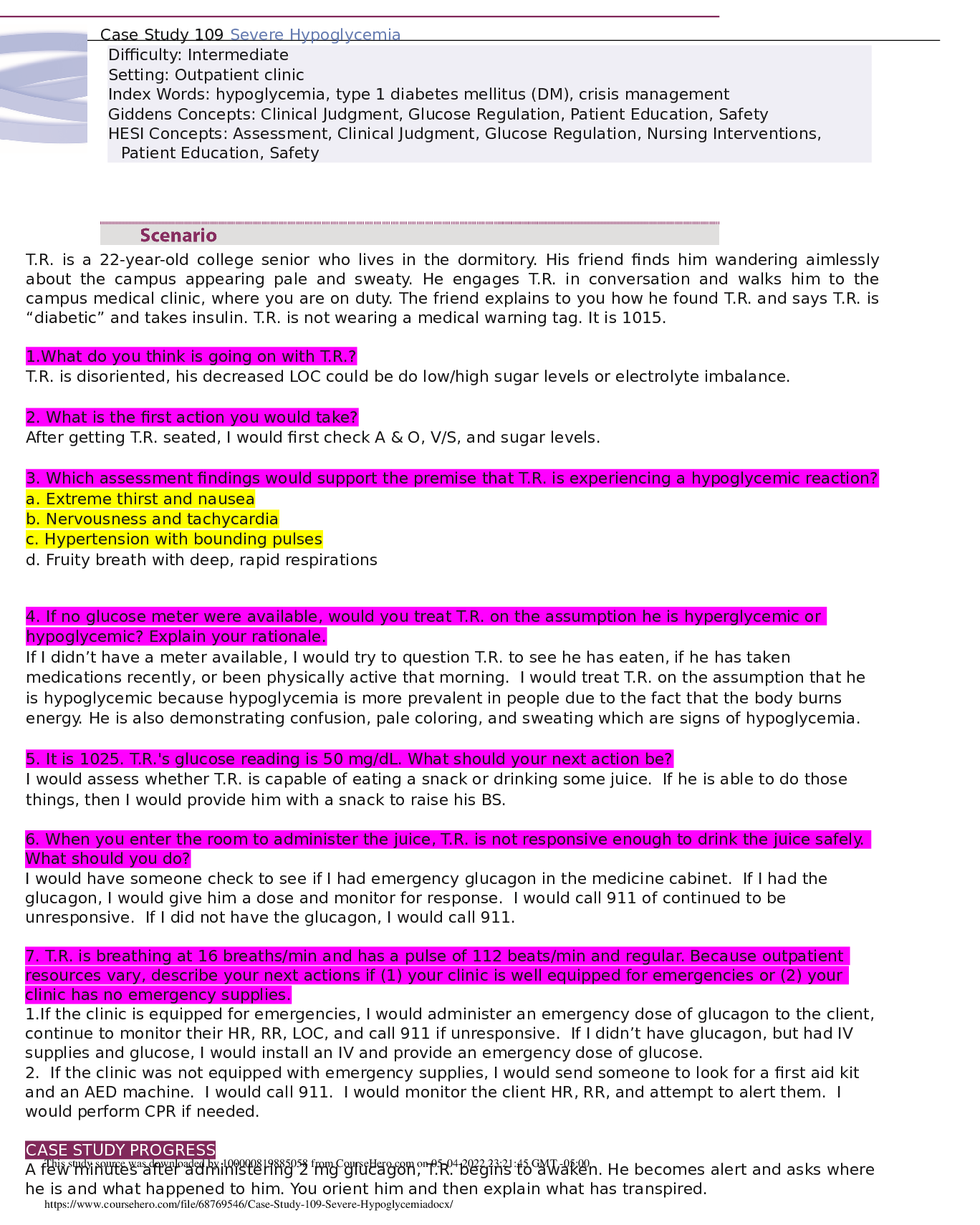
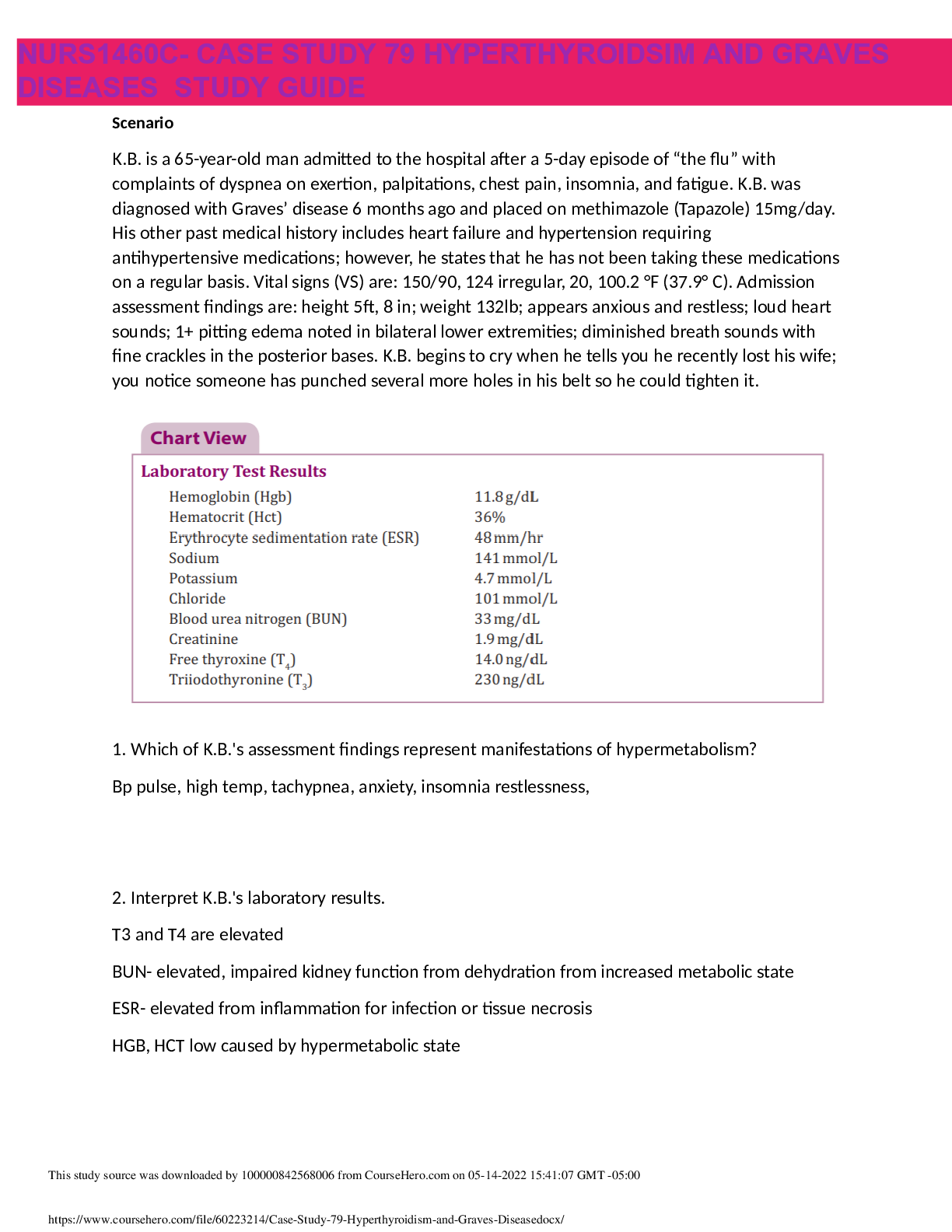
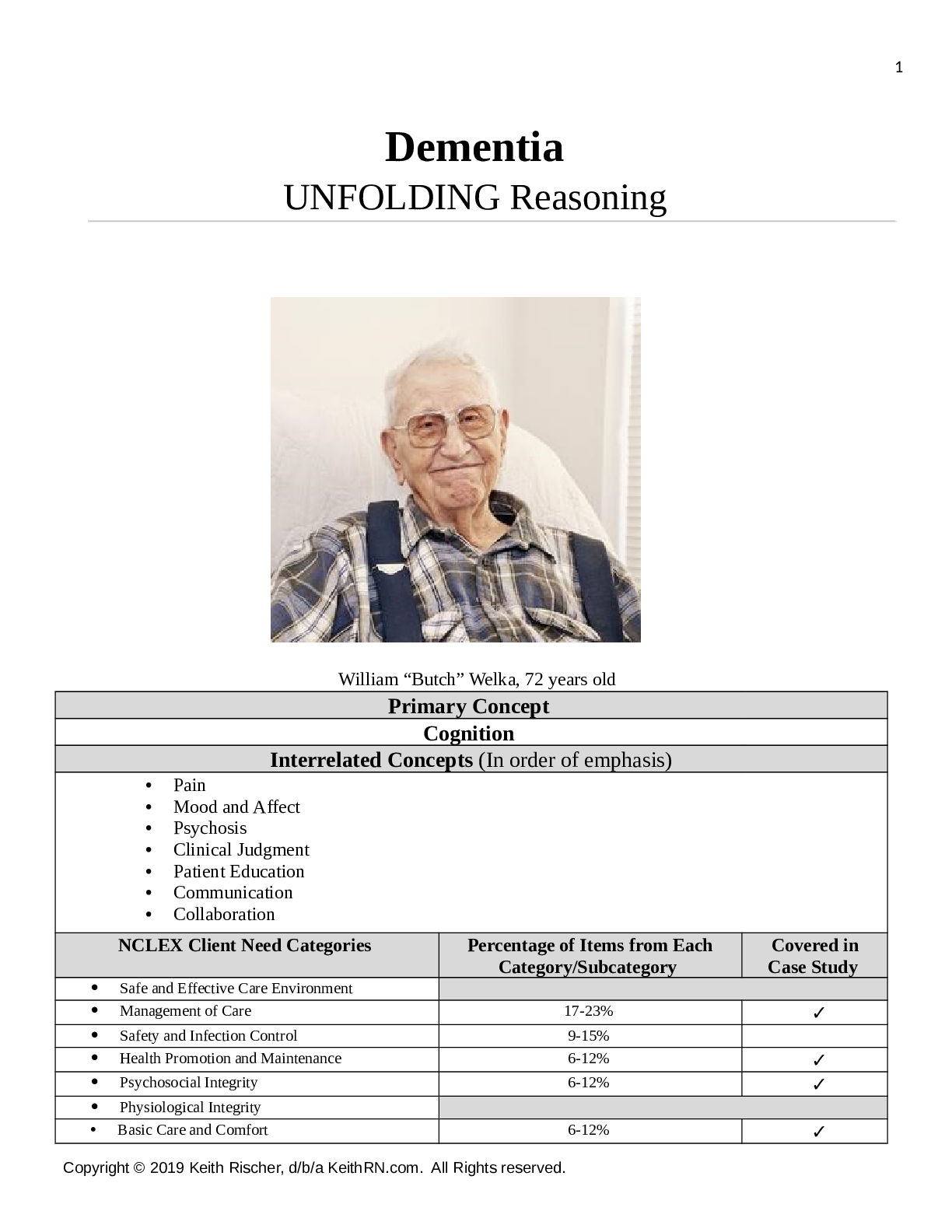





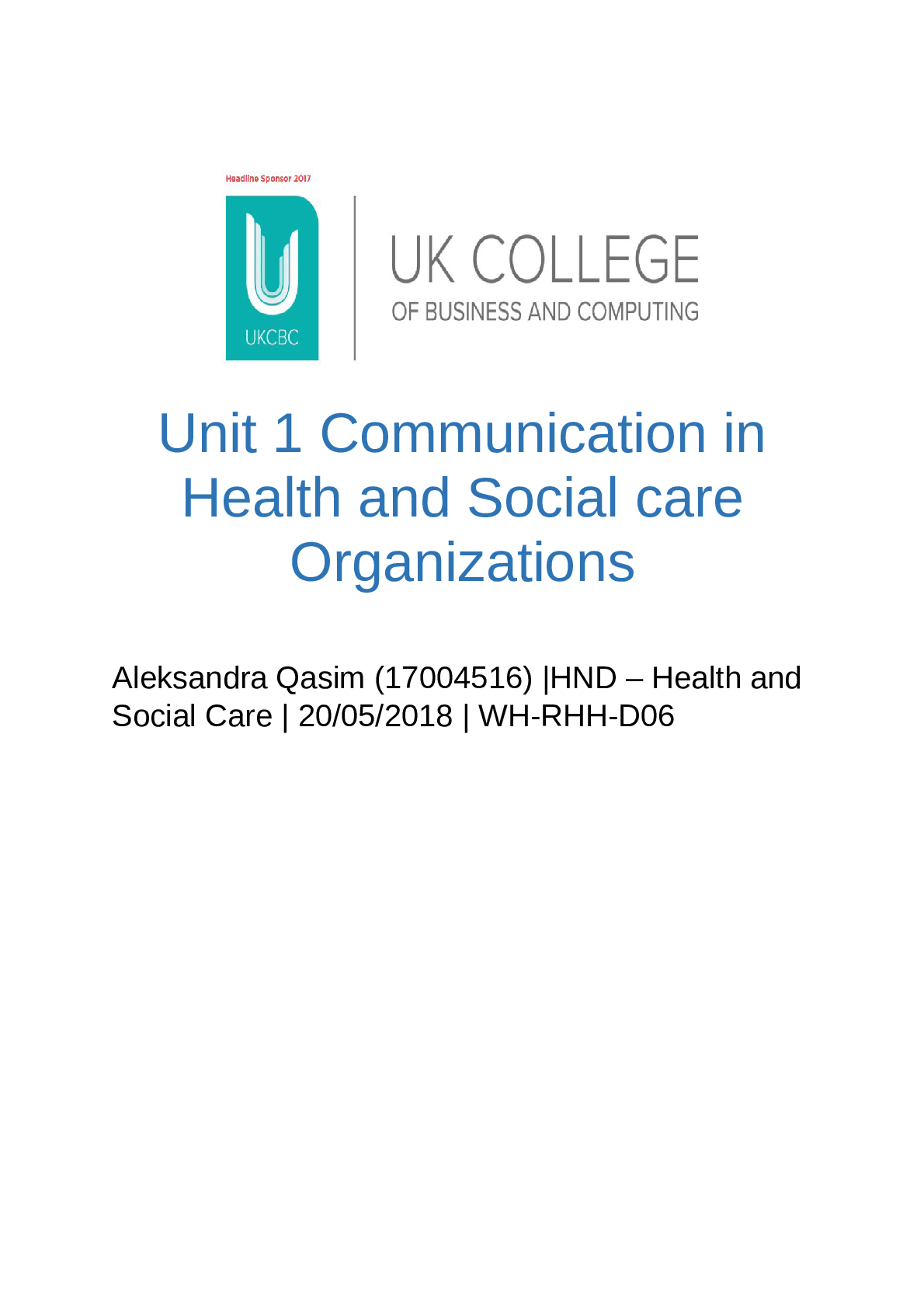



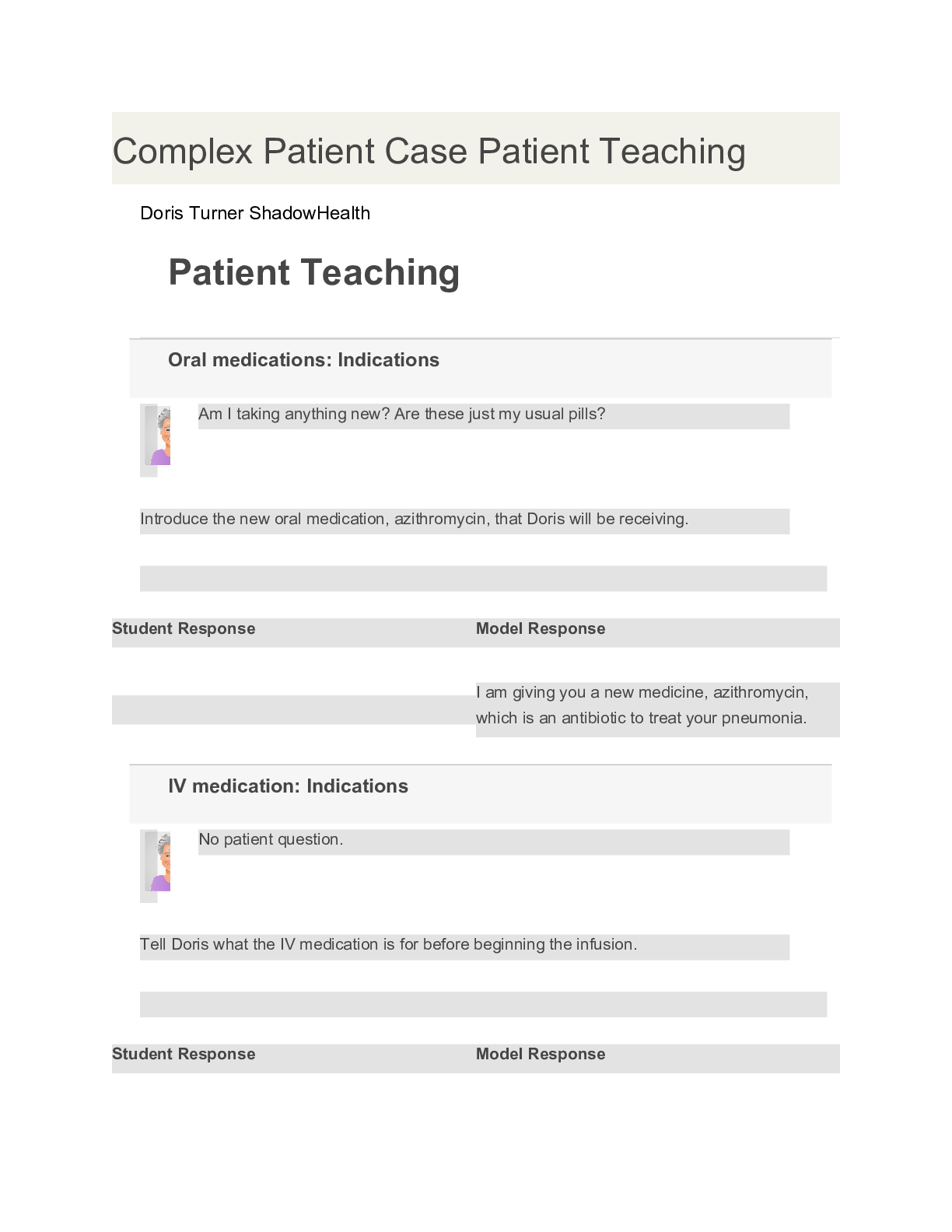


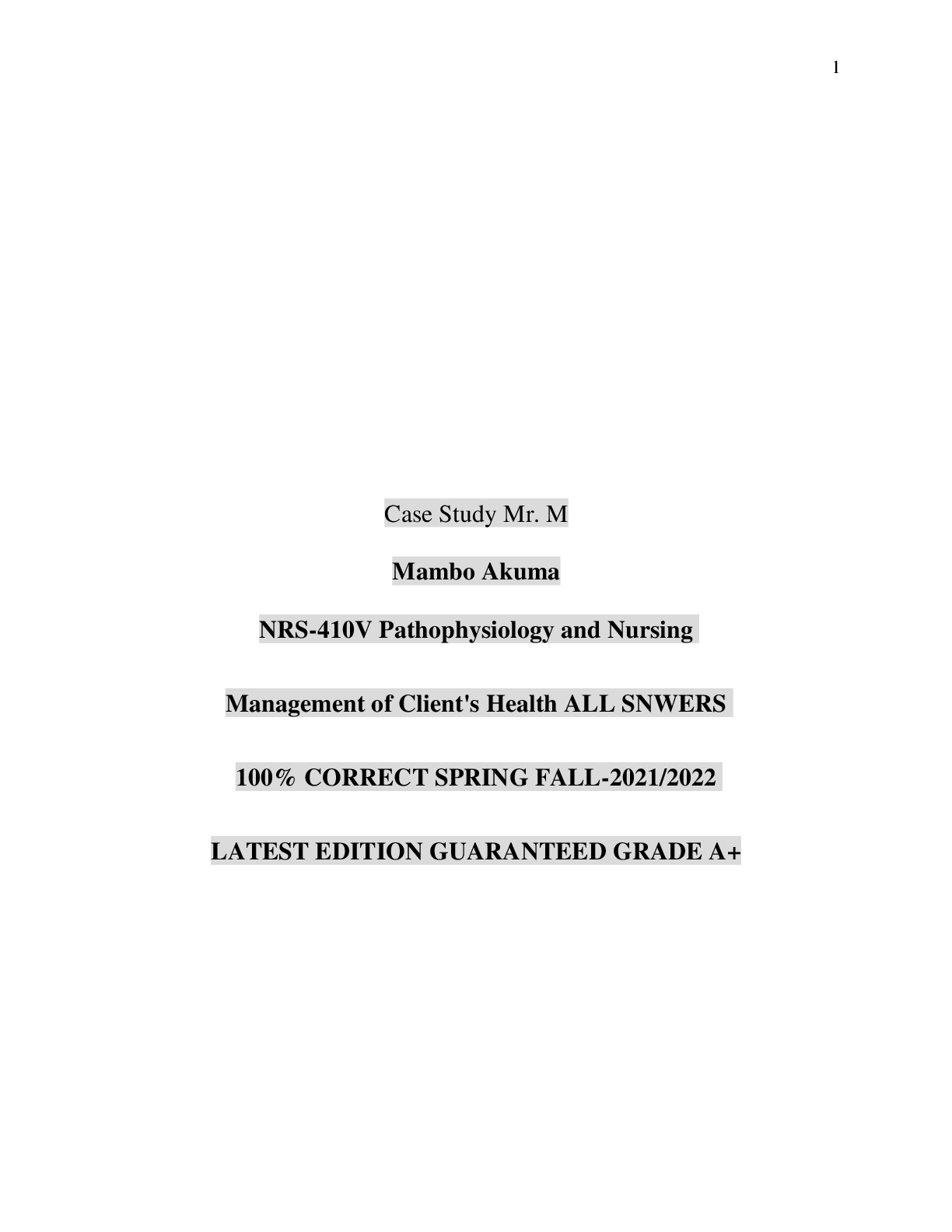

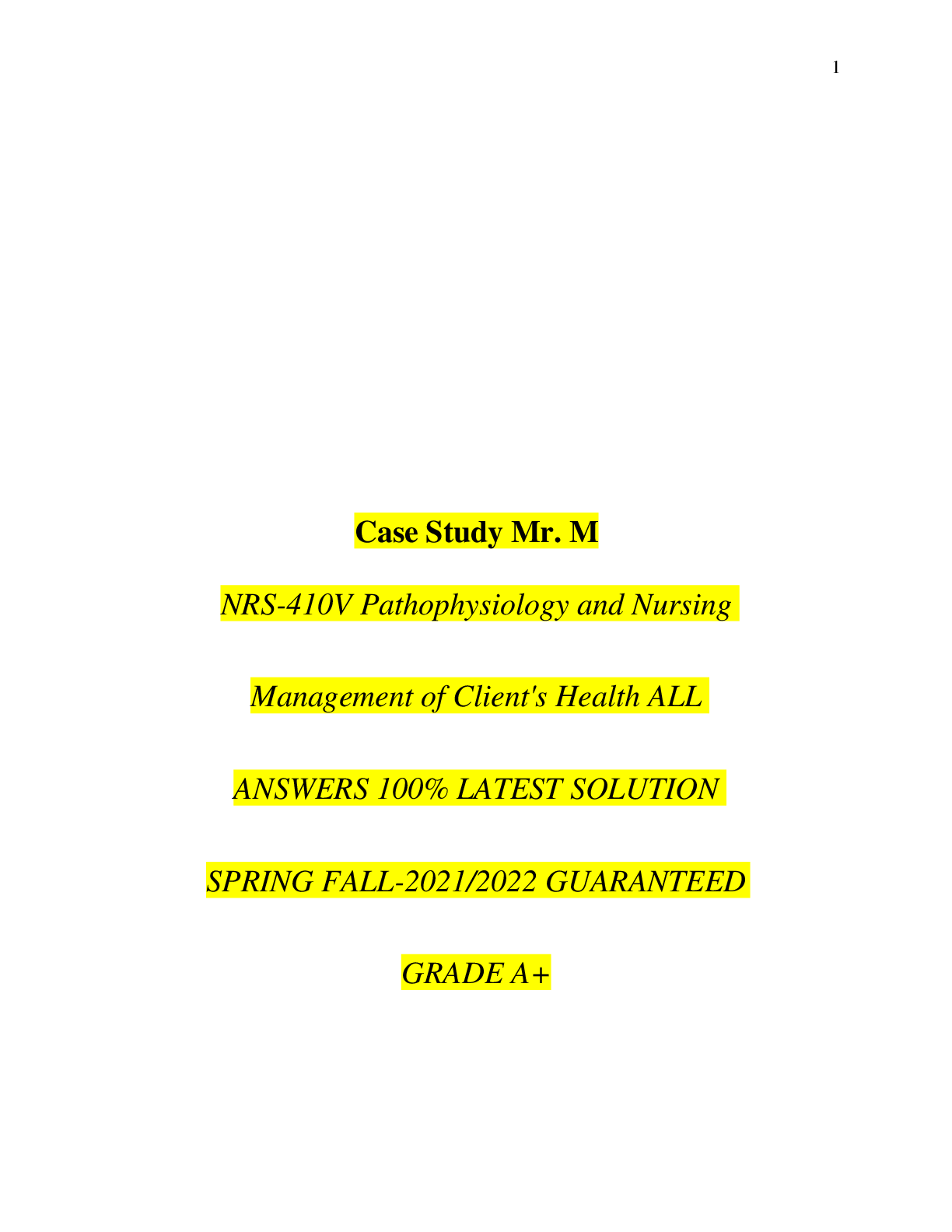



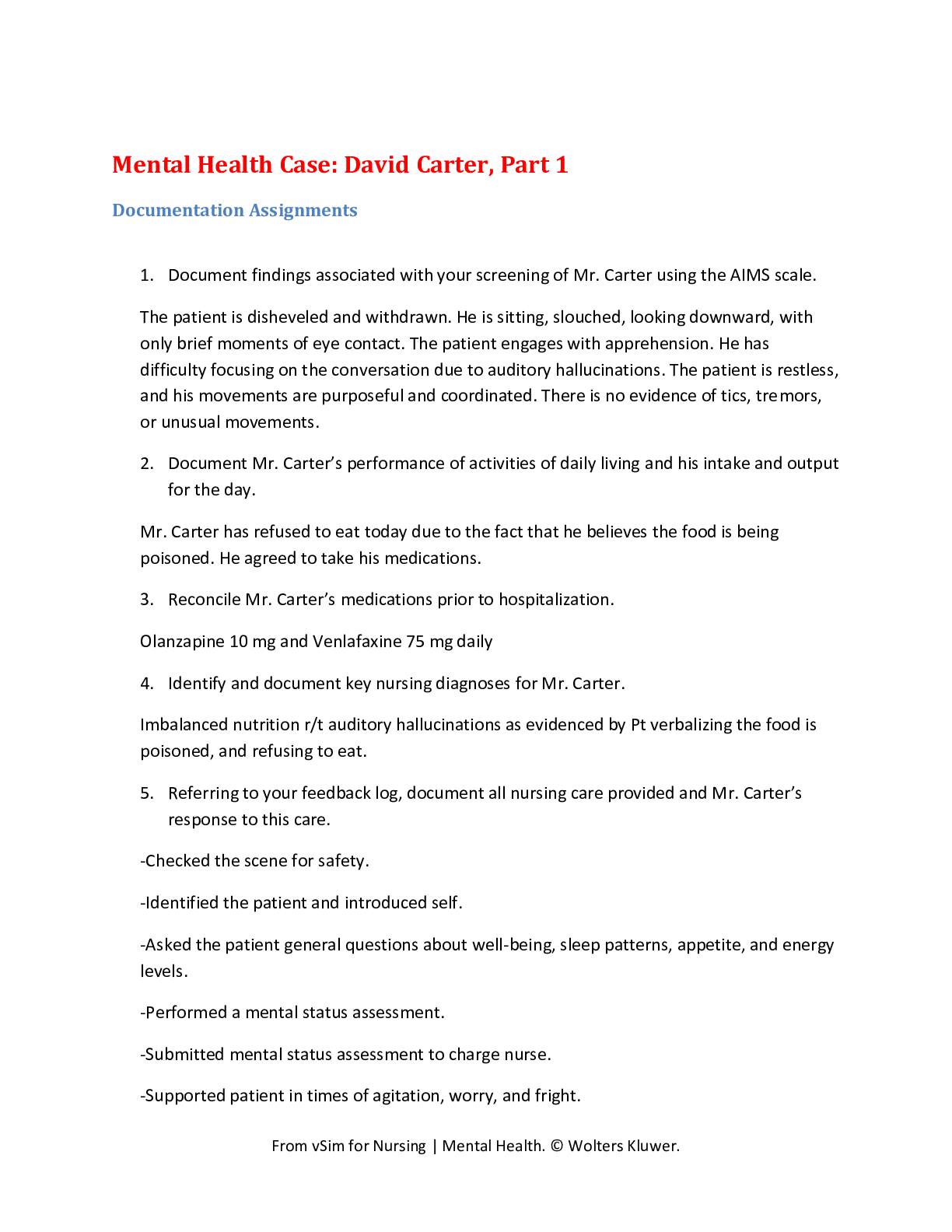
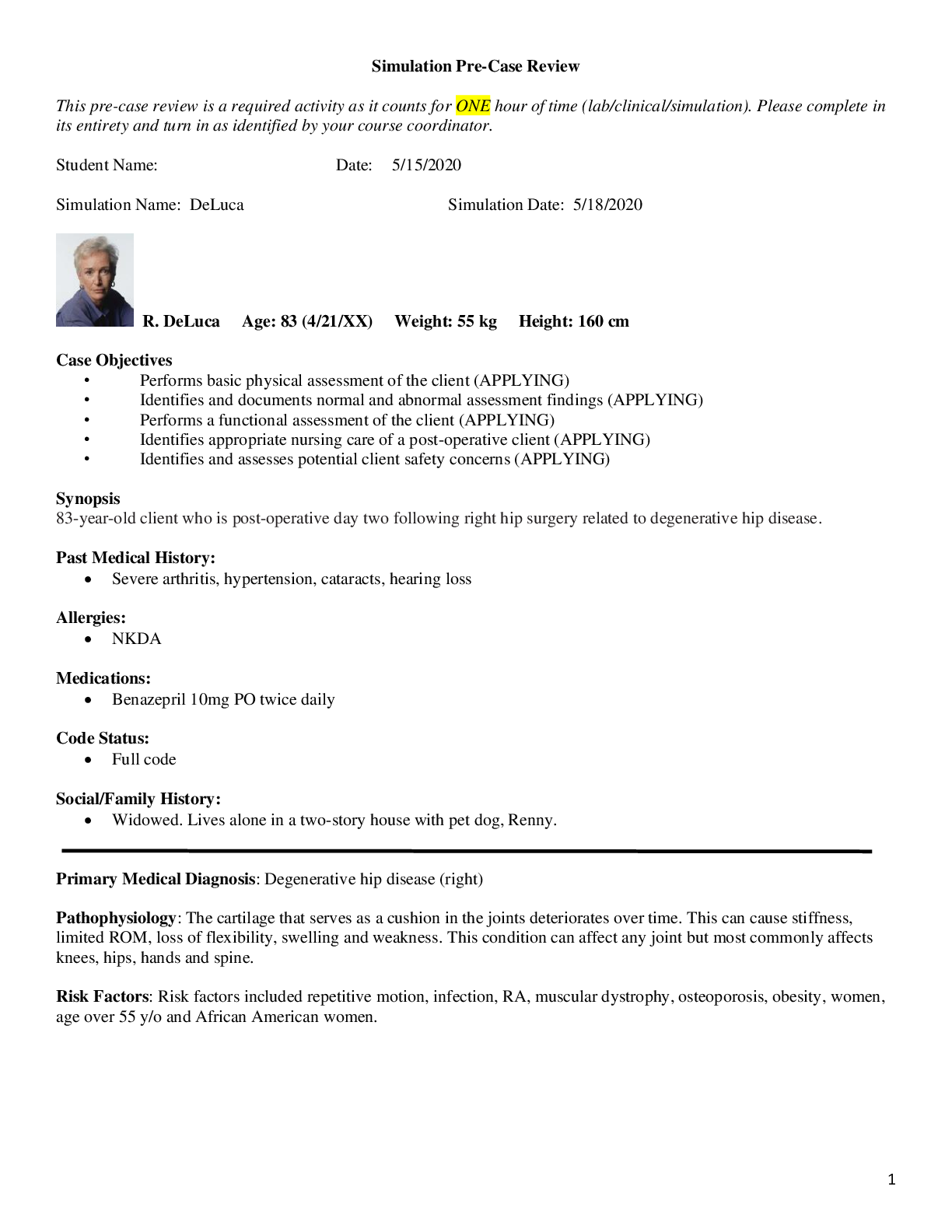
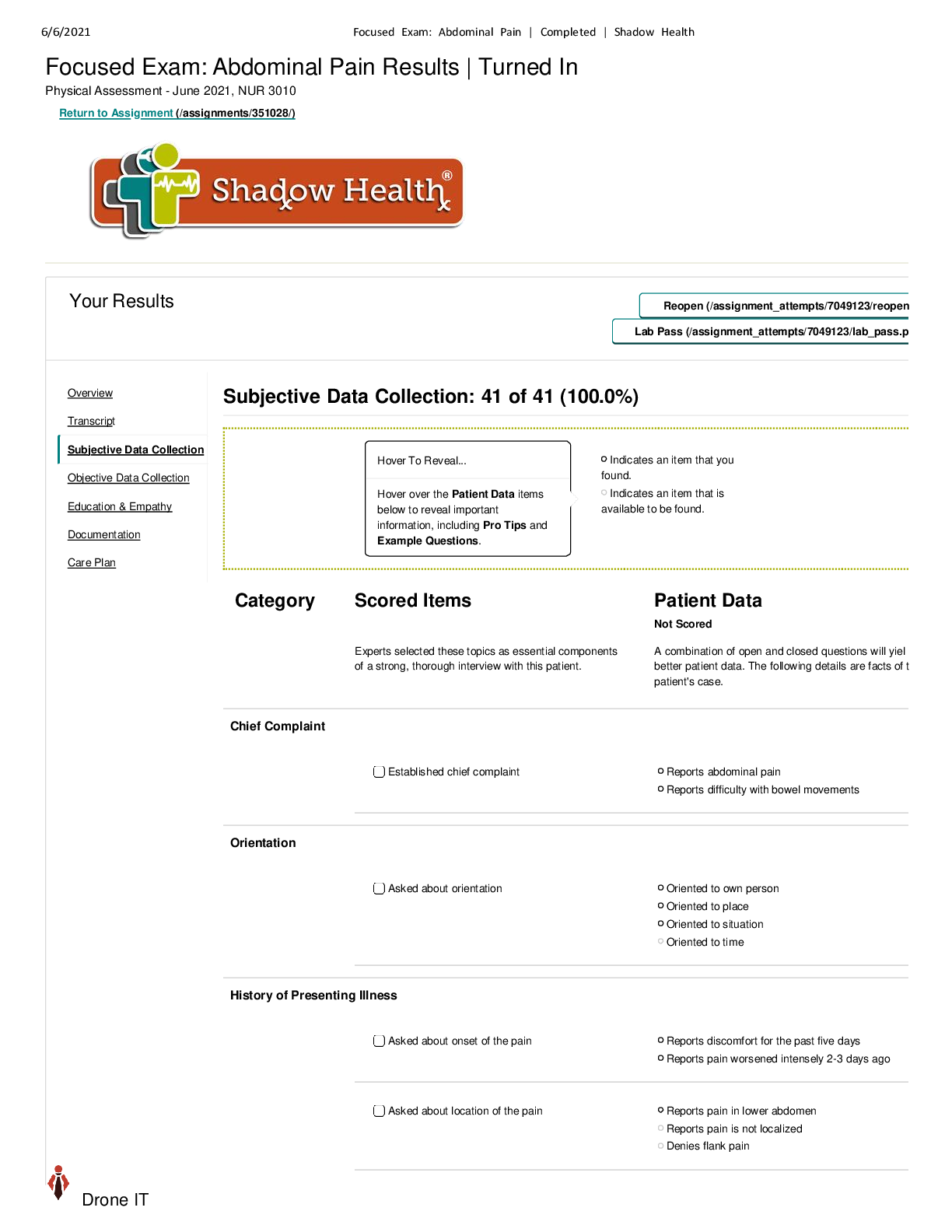
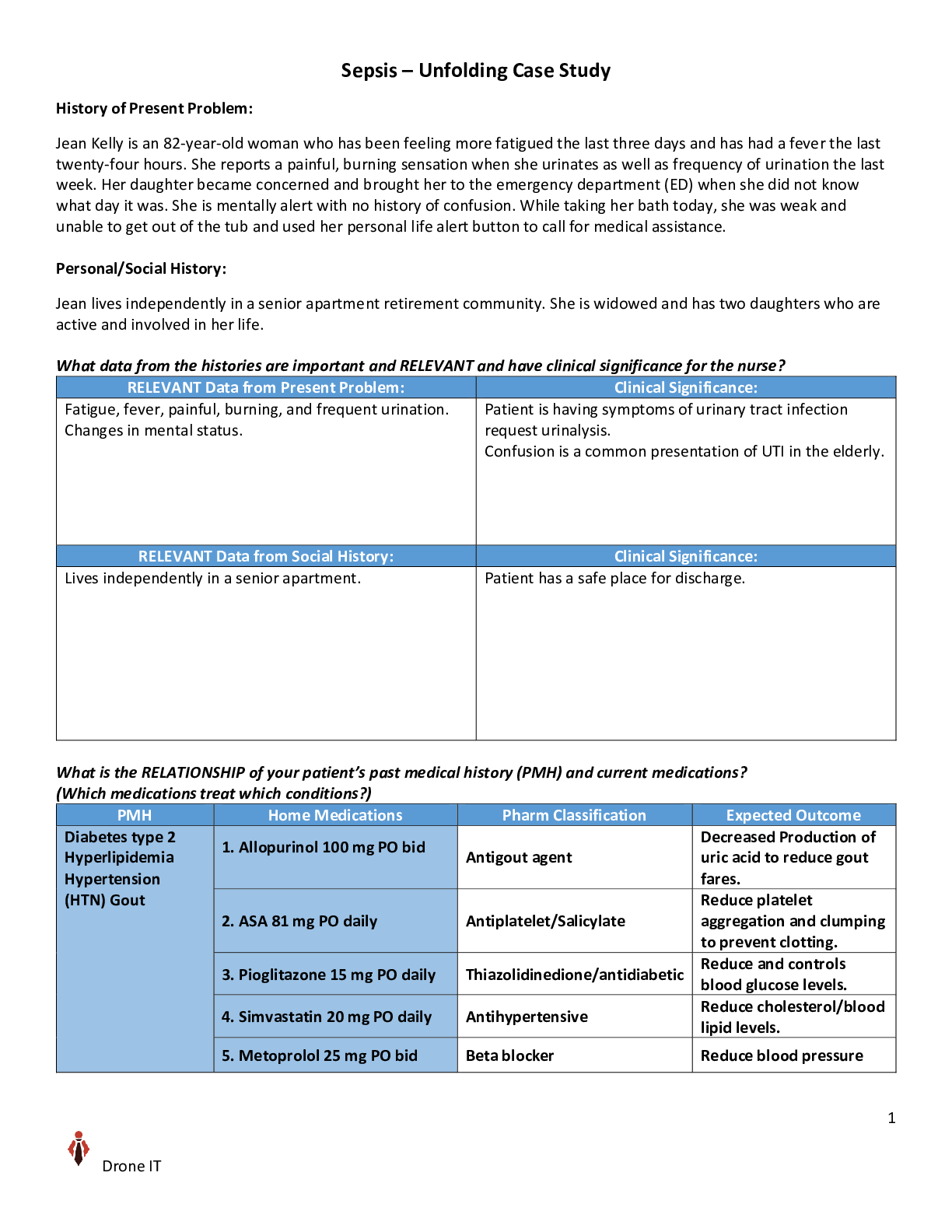

.png)

